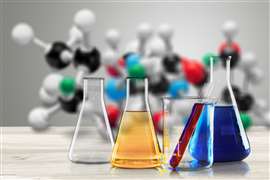ETF webinar touts value of using renewable diesel, biodiesel and additives to decarbonize
14 October 2024
 Image: scharfsinn86 via Adobe Stock
Image: scharfsinn86 via Adobe Stock
A recent Engine Technology Forum (ETF) webinar that addressed various innovations in internal combustion (IC) engines focused on everything from fuel sources to efficiency to emissions.
“Today, the internal combustion engine really drives key sectors of our global economy,” said Allen Schaeffer, executive director of ETF, “from agriculture to industrial applications to public transportation, rail and trucking.”
He added that IC engines are key to the U.S. economy as well as being a key to the country’s energy future. “And that’s because of several reasons we are going to get into today: the increased efficiency of the technology, its ability to achieve even lower emissions and the role that sustainable and renewable fuels play as part of this future endeavor.”
The first part of the webinar focused on renewable fuels. Steve Howell, founding partner of Marc-IV (M4) consulting and chair of the American Society of Testing and Materials (ASTM) biodiesel task force, kicked off the conversation. He addressed the importance of near-term and future carbon reduction by using biomass-based diesel fuels, namely renewable diesel and biodiesel.
Liquid Solar Energy
According to Howell, the biomass-based diesel industry was initially driven by a need to make use of excess soybean oil. This was followed by a focus on energy independence. Today, however, things are different.
“The major driving force now is carbon,” Howell said. He explained that for biomass-based diesel, growing feedstocks takes carbon dioxide (CO2) from the air. Burning the fuel puts CO2 back into the air.
“There’s a net lifecycle reduction of carbon in the atmosphere of about 70 percent,” Howell said. “We assume that all the energy used to grow and produce the fuel comes from a fossil source. So, as we decarbonize energy, that lifecycle CO2 decrease will approach net zero.”
He added that the industry tends to look at biomass-based diesel as “liquid solar energy” because “the energy from the sun is growing the fuel, and we store it in a fuel rather than a battery.”
CO2 Time Value
When it comes to reducing CO2 emissions, Howell explained it’s the time value of carbon that makes the effort so urgent.
“Carbon builds up in the atmosphere,” he said. “The carbon we release today is still there next year. The carbon we released is still there from the previous two years. So, there’s a compounding nature of carbon in the atmosphere. And for every five years of delay, we have to reduce 13 times more carbon emissions to have that same climate impact.”
According to Howell, reducing CO2 emissions today will have a greater benefit than waiting for future technologies to become available. It’s also the reason why the use of biomass-based diesel fuels has grown so dramatically in recent years.
“The industry has really increased in consumption, particularly over the last 15 years,” Howell said, remarking on the growth of all biomass-based fuels, including sustainable aviation fuel and renewable heating oil. “In 2010, we were making about 200 million gallons of fuel. Last year, we made over 4.5 billion gallons of fuel, and we’ve seen renewable diesel start to see market penetration. We’re right around 50/50 renewable diesel and biodiesel in North America here today.”
According to Howell, the long-term vision for the industry to exceed 6 billion gallons of biomass-based fuel by 2030 and reach 15 billion gallons by 2050.
“We have enough additional feedstock capacity to do about another 1.8 billion gallons right now,” he said. “We’re looking at in the future expanding yields from vegetable oils, expanding domestic crush [to process oilseeds], expanding the used cooking oils and other products we use — novel applications.”
Other Biomass-Based Benefits
In addition to decarbonization, biodiesel and renewable diesel offer other benefits to engines. This includes reduced particulate matter (PM).
“The tailpipe out is very low, done by the aftertreatment system,” Howell said. “But out of the engine, we do see particulate reductions. B20 shows a pretty large reduction in engine-out. That might actually reduce DPF [diesel particulate filter] regeneration frequency, which might have a long-term positive impact on systems moving forward.”
He added that because renewable diesel is roughly similar to B20 biodiesel, it too is likely to yield those particulate reductions.
Another benefit Howell pointed out was regarding lubricity.
“When we took the sulfur out of diesel fuel, both renewable diesel and conventional petroleum fuels needed some sort of lubricity additive,” Howell said. “And biodiesel can be that lubricity additive. And more lubricity would mean less wear on engine parts and fuel pumps. So, combinations of the fuels are really taking off and seeing market penetration.”
Mary Dery, performance additives technical director with specialty chemical company Innospec, followed Howell in the presentation and echoed those additional benefits.
“The lubricity properties have changed,” she said. “The oxidation properties have changed. And some benefits include less injector fouling and less particulate emissions in general.”
Additive Assistance
In Dery’s experience, existing diesel engines running on traditional ultra-low sulfur diesel (ULSD) fuel can decarbonize via the use of appropriate fuel additives.
 Image: BillionPhotos.com via Adobe Stock
Image: BillionPhotos.com via Adobe Stock
For example, Dery said that in the field, untreated ULSD can result in injector fouling, which leads to poor fuel efficiency and the need to regenerate the DPF more frequently, sometimes in an idle state.
“Ultimately, you’re going to use more fuel, which means you’re going to create more carbon dioxide,” she said. “You’re going to get a lot more hydrocarbons and particulate matter.”
A solution to this issue is using treated fuel, which contains a variety of additives:
- Lubricity improvers
- Cold-flow improvers (CFI)
- Corrosion inhibitors (CI)
- Detergents, also called deposit control additives (DCA)
Such additives can clean fuel injectors — and keep them clean.
“What that means is those holes remain open — completely open,” Dery said, adding, “You get better combustion, better fuel economy. You’ll see less DPF deposits. A DPF will be cleaner for longer. You’ll use less fuel, and ultimately have less emissions all the way around.”
As an example, Dery discussed a trial performed in a farm tractor that had more than 1800 hours on it and severe injector deposits as the result of using untreated diesel fuel.
“After only 100 hours operating on a detergent additive in the fuel, those deposits around the holes have eroded away,” she said. “And with that, we’ve reduced the NOx emissions 30 percent.” Dery added that PM2.5 emissions dropped 34 percent, as well.
Another test involved an on-highway vehicle — a 2019 Mercedes Sprinter — on which Innospec did a DPF loading study.
“We took untreated fuel, ran it in a Sprinter van, and measured how long it takes to saturate the DPF, requiring it [to have] a parked regeneration,” Dery said. The result was about three hours before regeneration.
“Upon adding treated fuel with detergent control additives, on the first treatment, we’ve extended it close to a half hour,” she said. After three subsequent treatments, the DPF regeneration interval grew to over five hours — an increase of 77 percent.
In underground mining, Dery reported on a trial of 24 vehicles that were operated for four months on untreated ULSD. They subsequently used treated ULSD for four months, which resulted in a 4.6 percent improvement in fuel consumption and a 14 percent reduction in carbon monoxide (CO) emissions.
Additives + Biomass-Based Diesel
Dery summed up these developments by saying that fleet owners and equipment/vehicle owners can reduce emissions on their existing ULSD-fueled vehicles by using diesel additives.
“There’s no fancy technology required,” she said. “They can use biodiesel in combination with a diesel detergent to get significant CO2 and particulate matter reduction.”
She added that combining additives with a switch to biomass-based diesel can have an even more dramatic impact.
“If you combine the biodiesel or renewable diesel with diesel detergent, you’ll have 50 to 70 percent reduction in CO2 with the biodiesel and another 3 to 6 percent savings with your diesel detergent,” Dery said. “And now we’re talking 80 percent reduction in CO2 emissions.”
STAY CONNECTED



Receive the information you need when you need it through our world-leading magazines, newsletters and daily briefings.
CONNECT WITH THE TEAM








